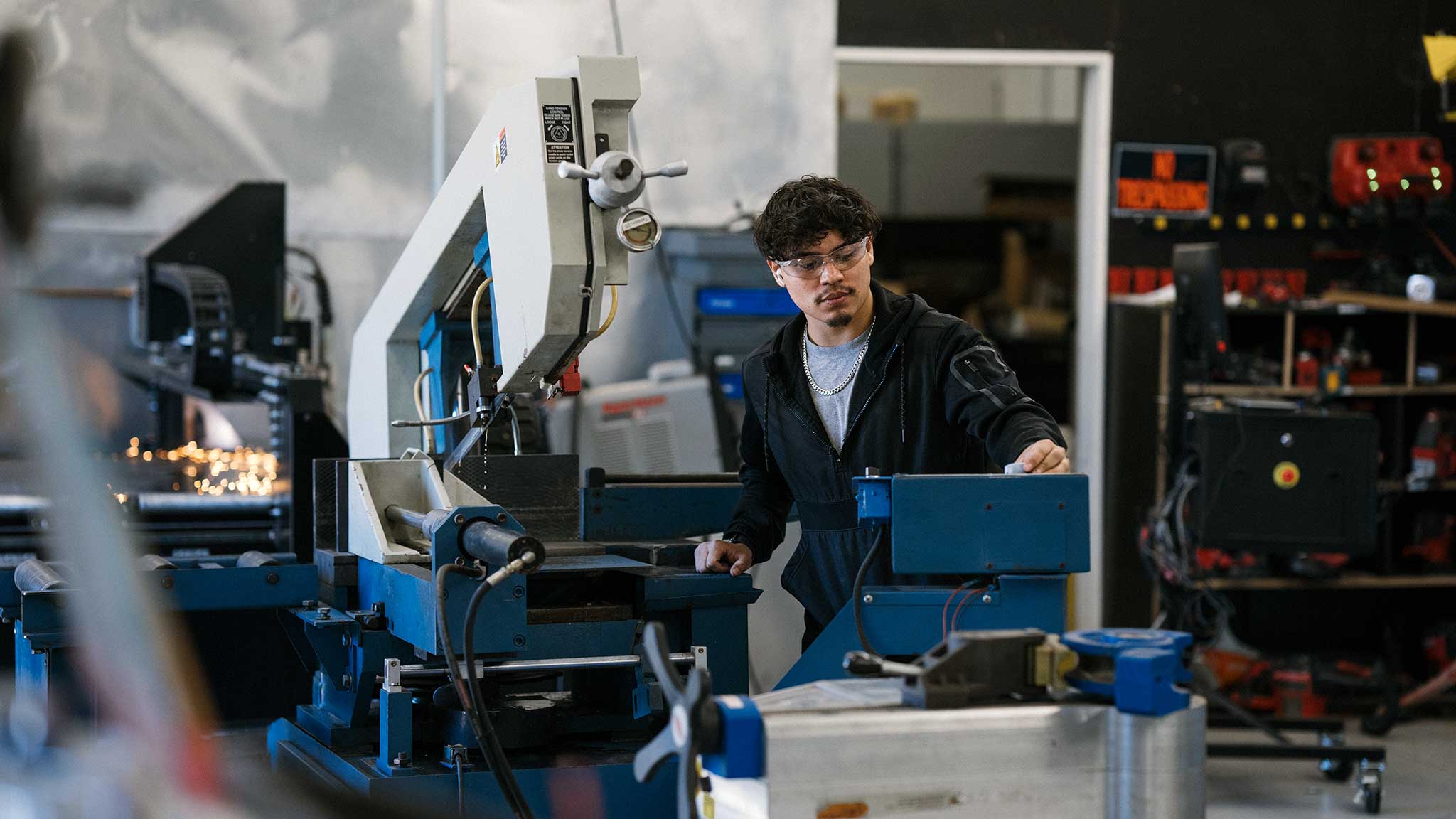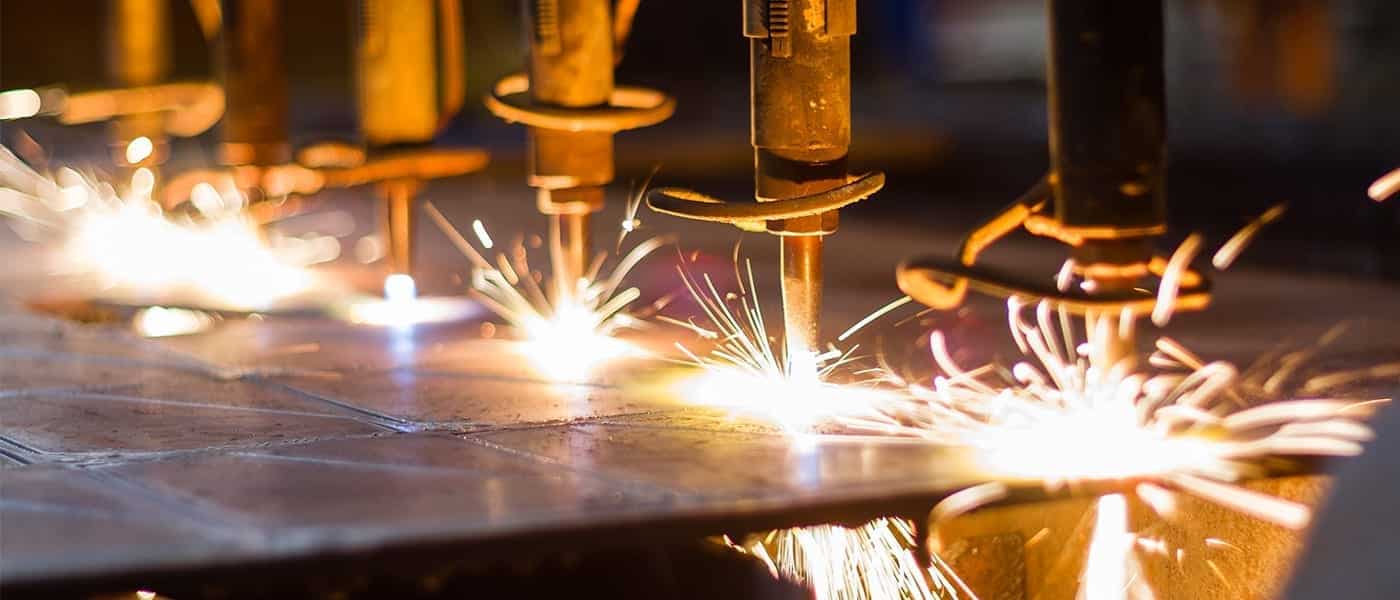Table of contents
There are always opportunities to capitalize on as a manufacturer. Unexpected demand swells, supply chain expansions, and seasonal fluctuations are all reasons to prioritize a consistent cash flow. Plus, there are significant costs associated with growth and staying competitive. Manufacturing loans can be an excellent tool for tackling these types of expenses.
Whether you need to cover new equipment or expand your operations, getting the proper financing is key. However, financing for manufacturers involves more than just applying for a loan. In this article, we’ll explore all the facets of manufacturing loans, from the options available and their benefits to how the lending process works from start to finish.
What Is a Manufacturing Loan?
A manufacturing loan is a type of loan tailored to the industry's unique financial needs. These loans come in many forms, each with distinct benefits, and allow manufacturers to sustain and grow their business.
Whether your business requires capital to expand operations or invest in new technologies, there is a loan product designed to fit your goals.
Types of Manufacturing Business Loans
Each type of manufacturing loan has its advantages and disadvantages. Here are six common financing options, from lines of credit and invoice factoring to SBA loans.

Term Loans
With upfront cash and a preset repayment period, term loans are one of the most straightforward financing options. Term loans can be secured or unsecured. Having the collateral for a secured loan or good business credit for an unsecured loan can land you a better interest rate.
| Best for: One-time manufacturing costs like upgrading equipment or expanding your facility. |
|---|
Lines of Credit
One alternative to a traditional loan is a manufacturing line of credit. With this type of financing, your business has constant access to capital. This flexibility allows you to draw funds when you need and only pay interest on what you’ve already borrowed.
| Best for: Managing seasonal fluctuations in cash flow, ongoing business growth, or as an emergency fund to cover unexpected expenses. |
|---|
Cash Flow Financing
Also known as royalty-based financing, this type of flexible loan involves an agreement to make payments based on a percentage of your business revenue. The biggest benefit to cash flow financing is that payments are not fixed; instead, they adjust as your sales increase or decrease.
| Best for: Manufacturers who experience seasonal fluctuations and those who lack the assets to put up as collateral for traditional loans. |
|---|
Equipment Financing
As the name suggests, equipment financing loans help businesses purchase machinery, tech, and other assets. The equipment itself secures this type of loan, often allowing for more favorable terms, including lower interest rates and longer repayment periods.
| Best for: Manufacturers looking to upgrade their existing equipment or expand operational abilities. |
|---|
Invoice Financing and Factoring
With invoice financing, you are approved for a loan at a set percentage of your invoices. As your customers pay their invoices, you pay the lender. With invoice factoring, you sell your invoices, often at a discount. The factoring company then collects capital directly from your customers.
| Best for: Manufacturers with long invoice cycles who need to bridge the gap and businesses that don’t mind giving up control of payment collection. |
|---|
SBA Loans
SBA loans come in various forms, including 7(a) and 504 loans, each with its advantages. Since the U.S. Small Business Administration backs all SBA loans, the underwriting process is lengthy, often stretching for three to six months.
| Best for: Startups and small businesses that struggle to qualify for traditional loans. |
|---|
Benefits of Manufacturing Loans
Beyond paying for expenses, manufacturing loans offer other key advantages that can be valuable for manufacturers.
- Improved cash flow: Manufacturing business loans give you access to capital when needed, allowing you to focus on production instead of stressing about the state of your cash flow.
- Flexible terms: Pay your loan back on a schedule that fits your business needs and cash flow fluctuations.
- Supports expansion opportunities: From financing for manufacturing equipment to acquiring a bigger manufacturing space, loans provide your business a way to grow without depleting cash reserves.
How to Evaluate Your Manufacturing Business Loan Options

Before seeking out a loan, it's important to review finances and determine your business needs. From projecting how financing manufacturing equipment will affect future profit to choosing the best manufacturing business funding option, here’s how to put a solid plan in place before applying.
Assess Your Financial Needs
Determining your business's financial needs is the first step in evaluating loan options. Essentially, how will the loan funds you request be used?
- Capital expenditure analysis: Research the costs associated with upgrading existing machinery or acquiring new equipment and other assets.
- Working capital evaluation: Calculate the amount needed to cover day-to-day operational expenses, including raw materials, labor, and overheads, ensuring smooth production cycles without cash flow interruptions.
- Growth projections: Determine the financing required to support expansion projects, such as entering new markets or scaling production capabilities.
Once you know how much capital you need, you can proceed to the next with a clear goal in mind.
List Out Assets Available for Collateral
Many manufacturing loans, especially those for equipment financing, require collateral. It is vital to understand which of your business assets you can use as collateral and their implications.
- Secured loans require collateral but also feature lower interest rates, longer repayment terms, and higher loan amounts, thanks to reduced risk for the lender.
- Unsecured loans don’t use collateral and are, therefore, riskier for the lender. Because of this, they generally carry higher interest rates and more restrictive terms.
Remember, these are just the base categories for manufacturing loans. Next, you’ll need to choose a specific loan type.
Match Your Business Needs to a Loan Type
With a clear understanding of your financial needs and collateral options, you must determine the most suitable loan type.
- Term loans–capital expenditures: These are great for significant one-time purchases, such as equipment or facility expansion. They come with fixed repayment terms and potential collateral requirements.
- Lines of credit–working capital: A good choice for managing cyclical or fluctuating operational costs. Offers great flexibility and immediate access to capital as needed.
- Equipment financing–machinery investments: Need new equipment or other business assets? Loans for equipment have fixed payments and use the asset itself as collateral.
- SBA loans–broad financial needs: A versatile option for various purposes, including working capital, equipment, and expansion. SBA loans come with favorable terms and government backing.
These are just a few of the most common loan types. Depending on your business needs and assets, other financing options may be better suited to your situation.
Research the Terms and Conditions
Different types of loans have varying terms and conditions that will impact the cost of the loan and how it is executed.
- Interest rates and fees: The interest rate and other fees you get charged will directly reflect the lender’s risk. The higher the interest rate and fees, the more your monthly payment will be.
- Repayment terms: Payment schedules can range from a few months to 10+ years. Choose a manageable term without straining your operational budget.
- Collateral requirements: Equipment loans are secured by the assets you are purchasing, but other types of secured loans will require you to put up business assets as collateral.
A loan is a significant business commitment, and understanding how the terms will impact your cash flow is crucial. Knowing the available rates, fees, and repayment terms may help you negotiate with a lender for a more competitive offer with a lender.
Seek Expert Advice
Given the complexities involved in financing decisions, seeking advice from financial advisors or consultants with experience in manufacturing financing can provide valuable insights.
- Personalized guidance: Get tailored advice based on your business’s financial health, industry trends, and specific financing needs.
- Risk analysis: Receive assistance in assessing the potential risks of different financing options and strategies to mitigate them.
- Loan comparison and negotiation: Professionals evaluate loan offers from various lenders and negotiate terms on your business’s behalf.
National Business Capital has a team of experts prepared to assist you throughout the application process, from start to finish. With personalized loan solutions and valuable guidance, we can help you find the best manufacturing loan for your business.
How to Apply for a Business Manufacturing Loan
Once you’ve finished evaluating your loan options, it's time to proceed through the manufacturing lending process. Here’s an overview of the steps you’ll need to take to obtain a manufacturing loan.
- Craft a comprehensive business plan: This document should provide a detailed overview of your business model, an analysis of your market position, detailed growth strategies, and solid financial projections. It should also include your reason for financing.
- Gather financial statements and documents: A lender might require balance sheets, income statements, cash flow statements, and tax returns from at least the last two years.
- Compare lenders and their requirements: Identify lenders familiar with the manufacturing industry and explore their qualifying criteria for applicants, such as minimum credit scores, specific financial ratios, and years in business.
- Fill out the application: Present your business in the best light. Be clear about how the loan will fuel future success, and be prepared to discuss your application in detail. Perform a thorough review and fix any errors before submitting your application.
- Negotiate the terms: Upon receiving an offer, review the terms carefully. If the offer isn’t what you expected, don’t hesitate to negotiate with the lender.
- Review and accept: Carefully review the terms and ensure the loan agreement aligns with your initial request and business needs. Then, sign the loan agreement and arrange for the disbursement of funds.
Depending on the type of loan you apply for, the application process may be shorter or more complex than this overview suggests. Once you’ve chosen a lender, they can provide you with a more detailed account of what you can expect when applying for a loan.
Explore Manufacturing Business Loans With National Business Capital
Securing a manufacturing loan can help set your business up for future success. But with so many lenders and loan options available, it's hard to know where to start. Whether you are looking for a flexible line of credit, an SBA-backed loan, or to leverage your invoices for a quick influx of cash, National Business Capital simplifies the lending process.
With our flexible and strategic approach, National Business Capital can help match you with the best financing solution and expert business advice so you can get back to doing what you do best: running your business. Let National Business Capital get you the funding you need; apply now.








